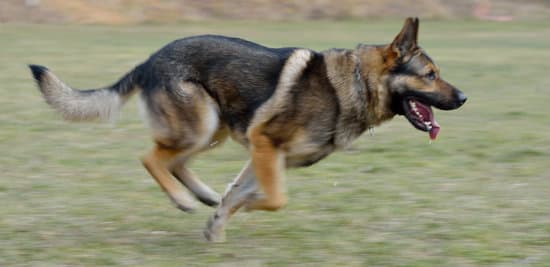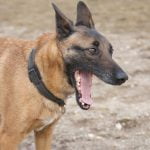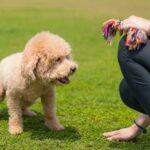Are you struggling with your dog’s destructive chewing habits? Learn how to train a dog not to chew on something by understanding their natural instinct and reasons behind this behavior. Chewing is a normal behavior for dogs, but it can become problematic when they target your belongings or furniture. In this article, we will explore effective techniques to redirect your dog’s chewing behavior and prevent destructive chewing.
Understanding why dogs chew is the first step in addressing this issue. Dogs have a natural instinct to chew, which can be attributed to various reasons such as teething, boredom, anxiety, or the need for mental and physical stimulation. By delving into the root causes of their chewing habits, you can effectively train your dog not to target inappropriate items.
Selecting the right chew toys plays a crucial role in redirecting your dog’s chewing behavior. By identifying the best toys that are safe and appealing to your dog, you can encourage desirable chewing behavior and discourage destructive chewing. Additionally, positive reinforcement training using rewards and praise can further reinforce good chewing habits while maintaining consistency and patience throughout the training process.
Selecting the Right Chew Toys
Dogs have a natural instinct to chew, and providing them with the right chew toys is essential for redirecting their chewing behavior and preventing destructive chewing. It’s important to understand that chewing is a normal canine behavior that helps dogs relieve stress, boredom, and teething discomfort. When it comes to selecting chew toys for your dog, there are several factors to consider.
Texture and Durability
When choosing chew toys for your dog, it’s important to consider the texture and durability of the toy. Look for toys that are made of durable materials such as rubber or nylon, as these are less likely to be destroyed by your dog’s strong jaws. Textured toys can also help soothe teething discomfort and keep your dog engaged.
Size and Shape
Selecting the right size and shape of chew toy is crucial for your dog’s safety. Make sure the toy is large enough so that your dog cannot swallow it whole, which can pose a choking hazard. Additionally, choose a toy that is easy for your dog to hold onto and manipulate with their paws and mouth.
Interactive and Puzzle Toys
In addition to traditional chew toys, interactive and puzzle toys can provide mental stimulation for your dog while also satisfying their chewing needs. These types of toys often dispense treats or have hidden compartments that require problem-solving skills, keeping your dog entertained and engaged.
By carefully selecting the right chew toys for your dog, you can effectively redirect their chewing behavior towards appropriate items while preventing destructive chewing. Understanding your dog’s preferences and tendencies can also help you choose the most suitable chew toys to keep them satisfied and prevent unwanted chewing behavior.
Positive Reinforcement Training
Understanding the Power of Positive Reinforcement
Positive reinforcement training is a highly effective method for teaching dogs what behaviors are desirable and should be repeated. This approach involves using rewards such as treats, praise, and toys to encourage a dog to exhibit certain behaviors. When it comes to preventing destructive chewing, positive reinforcement can be used to redirect a dog’s attention towards appropriate chew toys and away from forbidden items.
How to Train a Dog Not to Chew on Something Using Positive Reinforcement
When implementing positive reinforcement training to discourage destructive chewing, it’s important to catch the dog in the act of exhibiting the undesirable behavior. Instead of scolding or punishing the dog, immediately intervene by offering an acceptable chew toy and providing plenty of praise when the dog engages with it. This will help the dog make the association between choosing the appropriate item and receiving positive reinforcement.
Using consistent cues such as “leave it” or “drop it” can also aid in training a dog not to chew on something they shouldn’t. By pairing these commands with rewards and praise when obeyed, the dog will learn that listening to these commands results in positive outcomes. It’s essential for owners to remain patient and consistent with this training method, as it may take time for dogs to fully grasp what is expected of them.
Building a Strong Bond Through Positive Reinforcement Training
In addition to discouraging destructive chewing, positive reinforcement training also strengthens the bond between dogs and their owners. By using rewards and praise, owners can create a positive association between themselves and desirable behaviors in their pets. This approach fosters trust and respect within the human-dog relationship, making it an invaluable tool for addressing unwanted chewing habits in a non-confrontational manner.
Consistency and Patience
Training a dog not to chew on something requires consistency and patience from the owner. It’s important to understand that dogs chew as a natural instinct and to explore the reasons behind their chewing habits before implementing any training methods. Here are some tips on how to effectively train a dog not to chew on something:
- Consistent training: Consistency is key when it comes to training a dog not to chew on something. This means setting clear boundaries and rules for what items are off-limits for chewing, and consistently reinforcing these rules.
- Patience is required: It’s important to have patience when training a dog not to chew on something. Dogs may not learn new behaviors overnight, so it’s essential for owners to remain patient and persistent in their training efforts.
- Use positive reinforcement: When the dog chews on appropriate items such as chew toys, be sure to praise and reward them. This will help reinforce the desirable behavior of chewing on appropriate items, and discourage destructive chewing behavior.
By maintaining consistency in training and exercising patience with your pet, you can effectively train a dog not to chew on something over time. Remember that every dog is different, so it’s essential to tailor your approach based on your individual pet’s needs and temperament.
Supervision and Management
Unwanted chewing behavior in dogs can often be prevented through proper supervision and management. By actively monitoring your dog’s behavior and carefully managing their environment, you can significantly reduce the chances of destructive chewing. Here are some key strategies for effectively supervising and managing your dog to prevent unwanted chewing:
- Provide a safe and controlled environment: Remove any items that may tempt your dog to chew on them, especially when you cannot directly supervise them. This includes keeping household items such as shoes, clothing, and electrical cords out of reach.
- Use baby gates or crate training: Limiting your dog’s access to certain areas of the house can prevent them from getting into trouble when you’re not around. Utilizing a crate when you’re unable to supervise your dog can also help keep them out of trouble.
- Supervise closely during free time: When allowing your dog some freedom to roam around the house, it’s crucial to keep a close eye on their behavior. This allows you to intervene if they show any signs of wanting to chew on something they shouldn’t.
Supervision and management are essential components of training a dog not to chew on something they shouldn’t. By being proactive and attentive in these aspects, you can help guide your dog towards desirable chewing behavior while preventing destructive habits.
If you have concerns about your dog’s chewing behavior despite implementing supervision and management strategies, seeking professional help from a certified dog trainer or behaviorist may be necessary. They can provide valuable guidance and advice on how to address more challenging chewing issues, ensuring a harmonious relationship between you and your furry companion. Remember that with patience, consistency, and the right approach, most dogs can be successfully trained not to chew on forbidden items.
Providing Mental and Physical Stimulation
Dogs chew for a variety of reasons, and boredom or anxiety can be significant factors. Providing adequate mental and physical stimulation is essential in preventing excessive chewing due to these factors.
Regular exercise helps to release pent-up energy and reduce anxiety, while mental stimulation keeps your dog’s mind engaged and prevents boredom. In this section, we will explore the importance of exercise and mental stimulation in preventing excessive chewing and how it can be incorporated into your dog’s routine.
One way to provide physical stimulation for your dog is through regular walks, runs, or playtime. Depending on the breed and energy level of your dog, daily walks or runs may be necessary to keep them physically satiated. Engaging in interactive games such as fetch or agility training can also provide the necessary physical activity to prevent boredom-related chewing.
In addition to physical exercise, mental stimulation is equally important in preventing excessive chewing due to boredom or anxiety. Puzzle toys, treat-dispensing toys, and training exercises are all effective ways to engage your dog’s mind and prevent them from turning to destructive chewing out of boredom. These activities not only keep your dog entertained but also strengthen the bond between you and your pet.
It’s important for owners to make time for both physical exercise and mental stimulation in their dog’s daily routine. By incorporating these activities into their schedule, you can help prevent excessive chewing due to boredom or anxiety while promoting their overall well-being.
| Activity | Benefits |
|---|---|
| Regular walks/runs | Physical exercise releases pent-up energy and reduces anxiety |
| Puzzle toys/treat-dispensing toys/training exercises | Mental stimulation engages the dog’s mind and prevents boredom-related chewing |
Redirecting Attention
Dogs, like humans, can become easily bored or anxious, leading to destructive chewing behaviors. Redirecting a dog’s attention away from forbidden items and towards appropriate chew toys is an effective way to prevent unwanted chewing. By using the right techniques, pet owners can successfully train their dogs not to chew on something they shouldn’t.
One of the first steps in redirecting a dog’s attention is to provide a variety of safe and appropriate chew toys. This ensures that the dog has enticing alternatives to forbidden items. It’s essential to choose toys that are durable and engaging for the dog, such as rubber chew toys or puzzle feeders that dispense treats as the dog plays with them.
Another technique for redirecting a dog’s attention is to actively engage with the dog during playtime. By incorporating interactive play with the dog and their toys, you can help shift their focus away from destructive chewing. Additionally, making time for regular exercise and mental stimulation can also reduce a dog’s desire to engage in excessive chewing out of boredom or anxiety.
Using positive reinforcement is crucial when redirecting a dog’s attention. When the dog chooses to play with an appropriate toy instead of chewing on something they shouldn’t, it’s important to reward and praise their good behavior. This helps reinforce the idea that choosing a chew toy is desirable and encourages them to continue doing so in the future.
| Redirecting Attention Techniques | Description |
|---|---|
| Provide a variety of safe chew toys | Choose durable and engaging toys for the dog |
| Engage in interactive playtime | Shift the focus away from destructive chewing through play |
| Use positive reinforcement | Reward and praise desired chewing behavior with treats and verbal encouragement |
Seeking Professional Help
In conclusion, training a dog not to chew on something requires understanding the reasons behind their chewing behavior and implementing effective strategies to redirect that behavior. By selecting the right chew toys, using positive reinforcement training, and being consistent and patient, pet owners can effectively teach their dogs what they can and cannot chew on. Additionally, supervising a dog’s behavior, providing mental and physical stimulation, and redirecting their attention when necessary are all crucial aspects of preventing unwanted chewing.
However, there are cases where despite best efforts, a dog’s chewing behavior persists or becomes more severe. In such situations, it may be necessary to seek professional help from a certified dog trainer or behaviorist.
These professionals have the expertise and experience to assess the root cause of the chewing issue and develop a tailored training plan to address it. Their guidance can be invaluable in resolving more difficult chewing issues and helping both the dog and owner achieve a harmonious coexistence.
Ultimately, training a dog not to chew on something is an ongoing process that requires patience, consistency, and understanding. By employing the strategies discussed in this article and considering professional assistance when needed, pet owners can successfully manage their dog’s chewing behavior and foster a happy and healthy relationship with their furry companion.
Frequently Asked Questions
How Do I Get My Dog to Stop Chewing Everything When Left Alone?
To get your dog to stop chewing everything when left alone, it’s important to provide them with appropriate chew toys and mental stimulation. You can also try crate training or using deterrent sprays on objects they tend to chew.
What Age Do Dogs Stop Chewing Things Up?
Dogs typically stop chewing things up once they reach adulthood at around 1-2 years old. This is when they have moved past the teething stage and have matured enough to control their chewing behavior.
What Can I Put on Something to Keep Dog From Chewing?
You can put bitter apple spray, hot sauce, or a blend of vinegar and water on objects to keep dogs from chewing them. These tastes and scents are unappealing to dogs and can deter them from destructive chewing habits.

Welcome to the blog! I am a professional dog trainer and have been working with dogs for many years. In this blog, I will be discussing various topics related to dog training, including tips, tricks, and advice. I hope you find this information helpful and informative. Thanks for reading!





